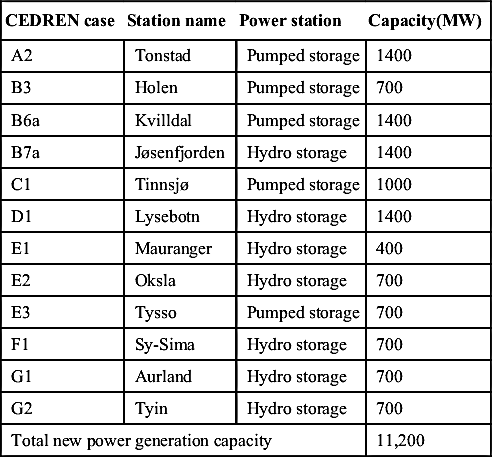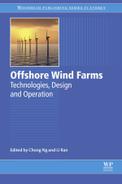Hydropower flexibility and transmission expansion to support integration of offshore wind
Abstract
In 2013, offshore wind grew over 50%. This increase, concentrated in a relatively small geographical area, can lead to an increased variability of the power produced by offshore wind. The variability is one of the key issues, along transmission, in integrating offshore wind power. Hydro power is one of the fast responding sources of electricity, thus power systems with considerable amounts of flexible hydro power can potentially offer easier integration of offshore wind power. The interaction between offshore wind and hydro power can be benefic, especially when looking at how the flexibility of hydro generation can match the variability of offshore wind, allowing for larger shares of variable generation to be integrated in the power systems without decreasing its stability. The analysis includes two interrelated models, a market model and a flow-based model. The results show that hydropower systems are a very good option for balancing the natural variability of wind power production, especially when installed offshore. The flexibility of hydropower systems allows power systems with a high share of RES to maintain stability. The analysis presented indicates that the value of hydropower flexibility to the European power system is significant, consequently justifying the investment costs for transmission expansion.
Keywords
Hydro power; Offshore wind power; Technology; Transmission system16.1. Introduction
16.2. Technologies
16.2.1. Offshore wind power
16.2.2. Hydro power
16.2.2.1. The existing flexibility of the Nordic hydro system
16.2.2.2. The future flexibility of the hydro system
16.2.3. Transmission system
16.3. Summary – case study
16.3.1. Models
16.3.1.1. Strategic exploitation of hydro power using a transport model and area-based representation
16.3.1.2. Detailed grid impact on dispatch of wind and hydro using power flow analysis and nodal representation
16.4. Scenarios
16.4.1. Geographical area (EMPS – the Northern European system and PSST Continental Europe with focus on Northern Europe)
16.4.1.1. EMPS model overview
16.4.1.2. PSST model overview

Table 16.3
Countries included in TWENTIES study
| Albania | Denmark | Hungary | Netherlands | Slovenia |
| Austria | Estonia | Ireland | Norway | Spain |
| Belgium | Finland | Italy | Poland | Sweden |
| Bosnia-Herzegovina | France | Latvia | Portugal | Switzerland |
| Bulgaria | Germany | Lithuania | Romania | Ukraine |
| Croatia | Great Britain | Macedonia | Serbia | |
| Czech Republic | Greece | Montenegro | Slovak Republic |

16.4.1.3. Generation mix (2030)
16.4.1.4. Offshore wind power per area

16.4.1.5. Hydro expansion scenario
Table 16.4
Offshore wind power development scenarios per country
| Country | MW installed by the end 2020 | MW installed by the end 2030 | ||
| Baseline | High | Baseline | High | |
| Belgium | 2156 | 2156 | 3956 | 3956 |
| Denmark | 2811 | 3211 | 4611 | 5811 |
| Estonia | 0 | 0 | 1695 | 1695 |
| Finland | 846 | 1446 | 3833 | 4933 |
| France | 3275 | 3935 | 5650 | 7035 |
| Germany | 8805 | 12,999 | 24,063 | 31,702 |
| Ireland | 1155 | 2119 | 3480 | 4219 |
| Latvia | 0 | 0 | 1100 | 1100 |
| Lithuania | 0 | 0 | 1000 | 1000 |
| Netherlands | 5298 | 6298 | 13,294 | 16,794 |
| Norway | 415 | 1020 | 3215 | 5540 |
| Poland | 500 | 500 | 500 | 500 |
| Russia | 0 | 0 | 500 | 500 |
| Sweden | 1699 | 3129 | 6865 | 8215 |
| UK | 13,711 | 19,381 | 39,901 | 48,071 |
| TOTAL | 40,671 | 56,194 | 113,663 | 141,071 |

Table 16.5
Hydro power expansion and pumping in southern Norway (11.2 GW) in Solvang et al. (2012)
| CEDREN case | Station name | Power station | Capacity(MW) |
| A2 | Tonstad | Pumped storage | 1400 |
| B3 | Holen | Pumped storage | 700 |
| B6a | Kvilldal | Pumped storage | 1400 |
| B7a | Jøsenfjorden | Hydro storage | 1400 |
| C1 | Tinnsjø | Pumped storage | 1000 |
| D1 | Lysebotn | Hydro storage | 1400 |
| E1 | Mauranger | Hydro storage | 400 |
| E2 | Oksla | Hydro storage | 700 |
| E3 | Tysso | Pumped storage | 700 |
| F1 | Sy-Sima | Hydro storage | 700 |
| G1 | Aurland | Hydro storage | 700 |
| G2 | Tyin | Hydro storage | 700 |
| Total new power generation capacity | 11,200 | ||

16.5. Results
16.5.1. Transmission expansion and the impacts on the provision of hydropower flexibility

16.5.2. EMPS results
16.5.2.1. Strategy for using hydro power
16.5.2.2. Hydro production and reservoir handling

16.5.2.3. Electricity prices and transmission




16.5.3. PSST results
16.5.3.1. Offshore grid alternatives to export Nordic hydro flexibility to Continental Europe

16.5.3.2. Case study in Tonstad to assess the correlation between wind and pumping profile









